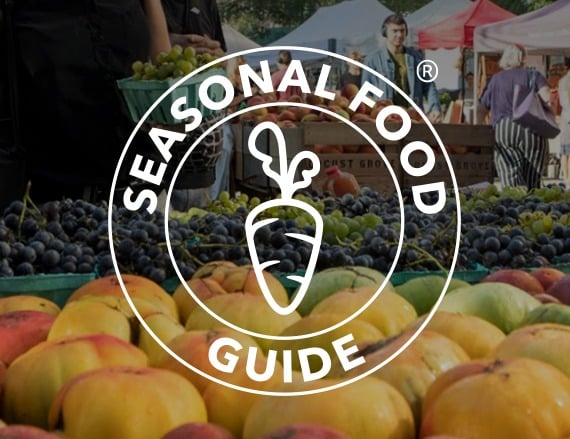Real Food Encyclopedia | Prickly Pear and Nopales
There are a great number of species of the prickly pear cactus (genus Opuntia), many of which have edible fruits and leaves (or “paddles”) and all of which are native to the Americas. The plant was probably first cultivated in Mesoamerica and was of particular importance to the Aztecs. Fossilized seeds and skins of the prickly pear fruit have been found in Mexico. In fact, the name of the great Aztec city of Tenochtitlán, now Mexico City, means “place where cactus pear grows on stone.”
Writers in the early 16th century commenting on Spanish colonization of the Americas, including the conquistador Hernán Cortés, noted the deliciousness of the fruit. They took the cactus to Spain, and Arab traders then spread the plant to the Middle East; it eventually took hold in other parts of the world, including South Africa, India and Australia.
Other names include Indian fig, mission cactus, Barbary fig and cactus pear. The Spanish name, nopal(es) — derived from Nahuatl — is also used specifically in reference to the edible paddles.
Did you know?
- Nopales and prickly pears (or tunas, in Spanish) are such important foods in Mexico that the cactus appears on the Mexican flag.
- The fruits are also highly prized in Sicily, where the juiciest specimens are called bastardoni (which means exactly what it sounds like).
- Cochineals, insects that live and feed on prickly pear paddles, produce bright-red carminic acid and are the source of the valuable colorant carmine.
- Prickly pear has proven a particularly noxious invasive species in Australia: Introduced in the late 18th century, the plant had overtaken millions of acres by the 1920s, rendering the land useless for agriculture.
- Traditionally, heated paddles were used like heating pads or poultices as a treatment for arthritis and other aches and pains.
What to look for when buying prickly pears and nopales
Both the paddles and fruit of the prickly pear are covered in tiny spines, which can cause skin irritation and are certainly not delicious. Some vendors will strip the spines off of the paddles and fruit before selling. If you wild harvest, you may have to take the spines off yourself (more on that below).
The fruits we most commonly see in North America are a dusky magenta-red with a magenta interior, but if you’re lucky you may find yellow, green, orange or even white fruits — either at the market or in the wild.
The paddles are usually harvested young, since older paddles are tougher and their spines are difficult to remove. Look for bright green paddles that are soft, but not floppy. Both fruit and paddles should be free from mushy or black spots and feel firm when gently squeezed.
Sustainability of prickly pears and nopales
Prickly pear cacti are champs at growing in marginal environments with little water, making them a more sustainable agricultural choice than many other fruits and vegetables (especially in drought-prone areas like California). They can also be wild-harvested; you’ll find the cactus everywhere from the Southwest to the Great Lakes and even beaches on the East Coast.
A commercially grown cactus may be treated with synthetic fertilizer, especially if being grown specifically for its paddles, or with pesticides. If you’re lucky enough to find prickly pear fruits or paddles at your local farmers’ market, talk to the farmer to find out more about their practices.
Seasonality
Young cactus paddles typically appear in markets in the spring. In the U.S., cactus fruits appear in the mid-summer through fall, although you may find imported fruits in specialty markets year-round.
Geography
Edible cactus are so important in some places that the U.N. Food and Agriculture Organization holds regular “CactusNet” symposia on its use. One of the most commonly cultivated species of prickly pear, Opuntia ficus-indica, is grown for both its fruits and its paddles in arid areas all over the world, including central Mexico, parts of the Mediterranean, South Africa, the Middle East and parts of East Africa. There have been campaigns to popularize both the fruit and the paddles of the cactus as foods in the U.S.
Eating prickly pears and nopales
Storing
Prickly pears and nopales can be stored covered in the refrigerator for up to three weeks.
Cooking
Before cooking nopales, you’ll want to make sure to de-spine and clean them. The fruits, too, must be handled and prepared in a certain way to avoid getting stuck by the painful spines.
Nopales are used as a vegetable in much of Mexico and the Southwestern U.S. After de-spining, they can be cooked as a side, eaten in salads, made into salsas or tucked into tacos. The paddles will release a mucilaginous sap, much in the same way as okra; if you don’t enjoy that texture, sauteing or boiling will reduce the sliminess.
Prickly pear fruits can be used in drinks like agua de tuna, margaritas or the fizzy, mildly alcoholic Mexican beverage called colonche, as well as in candies and sauces or syrups for both sweet and savory dishes.
Preserving
Freezing prickly pears and nopales typically won’t cause any issues — though it will change the texture somewhat, these ingredients are predominantly used in cooked or processed dishes where any change will be hardly noticeable.
Nutrition and health
Prickly pear fruit is a good source of Vitamin C, magnesium, and fiber.
Top photo by amhawks98/Adobe Stock.

